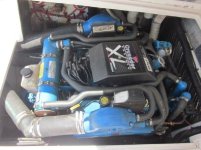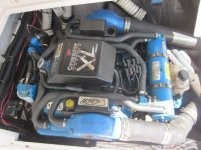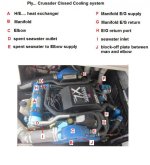Ply
Contributing Member
Hello all...
I am attaching a photo of one of my new to me 454 FWC engines.
As a humble man I was hoping someone could basically dumb down the cooling system "pathway."
I have an obvious general understanding of Marine cooling systems, but i'm not 100% sure of exactly what would be subjected to raw water in this system. Obviously the risers would be, but how about the manifolds in this engine?
Any explanation of the hoses running to and from the heat exchanger would be appreciated.....
I guess i'm wondering where the RAW water goes?? and doesn't go...
Picture will be on following reply as I'm having issues attaching it with text here... apparently i'm technologically challenged as well as cooling system challenged...lol....
I am attaching a photo of one of my new to me 454 FWC engines.
As a humble man I was hoping someone could basically dumb down the cooling system "pathway."
I have an obvious general understanding of Marine cooling systems, but i'm not 100% sure of exactly what would be subjected to raw water in this system. Obviously the risers would be, but how about the manifolds in this engine?
Any explanation of the hoses running to and from the heat exchanger would be appreciated.....
I guess i'm wondering where the RAW water goes?? and doesn't go...
Picture will be on following reply as I'm having issues attaching it with text here... apparently i'm technologically challenged as well as cooling system challenged...lol....




